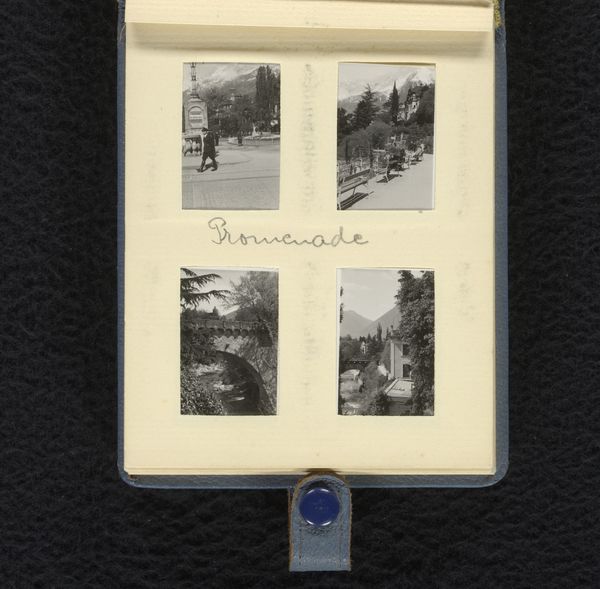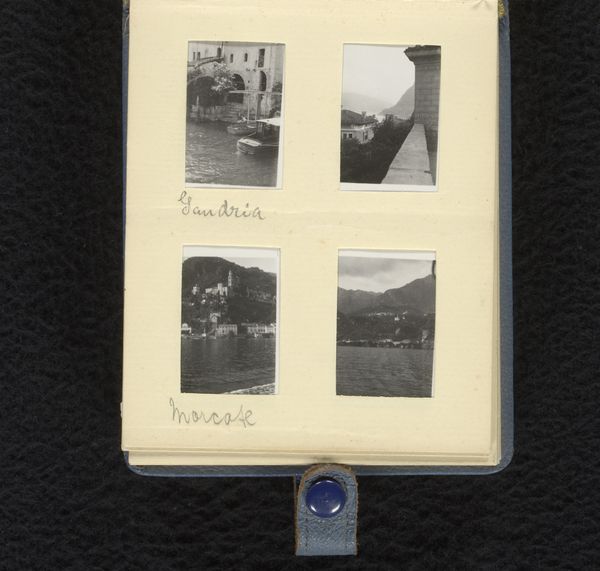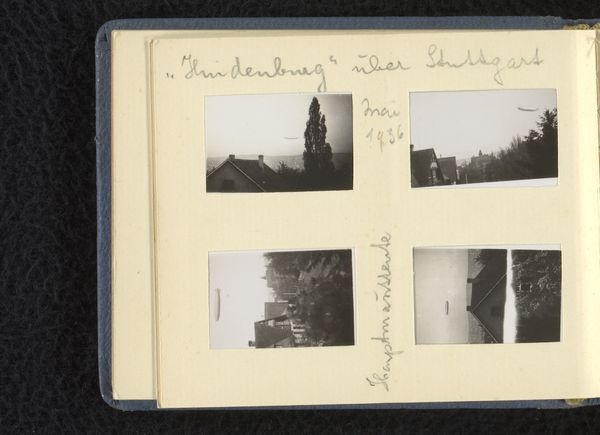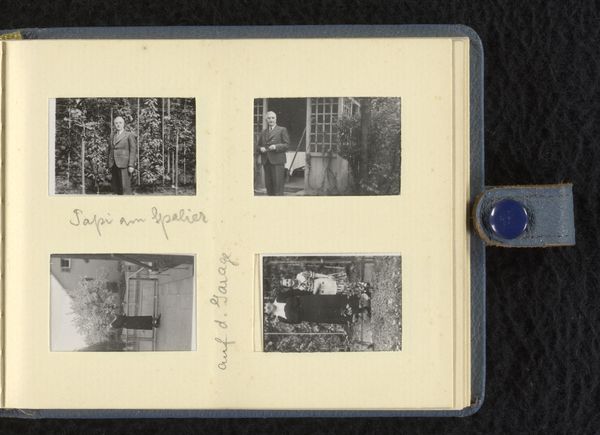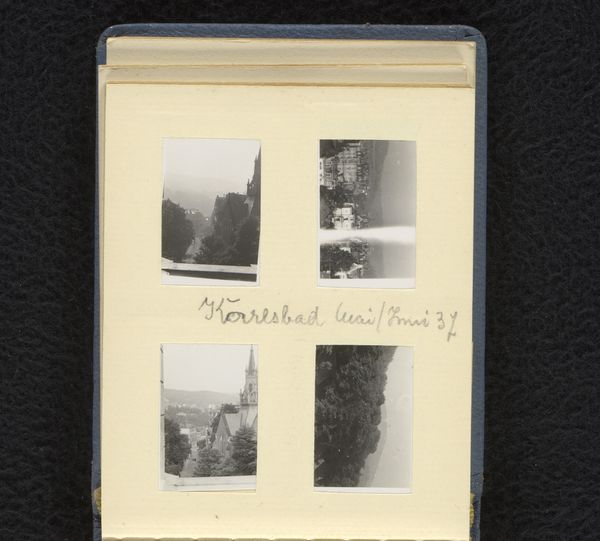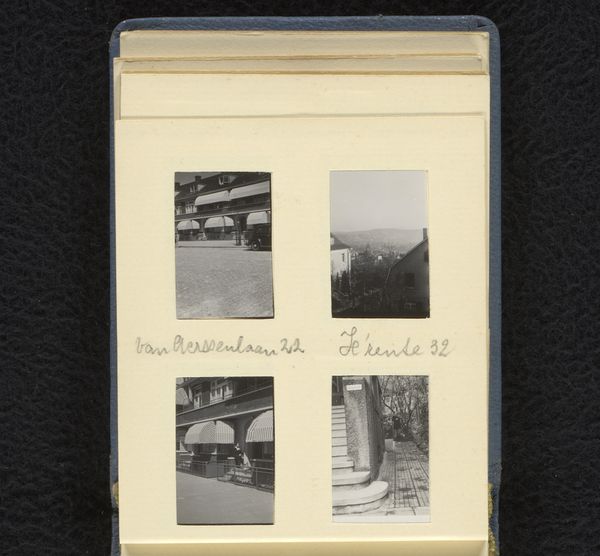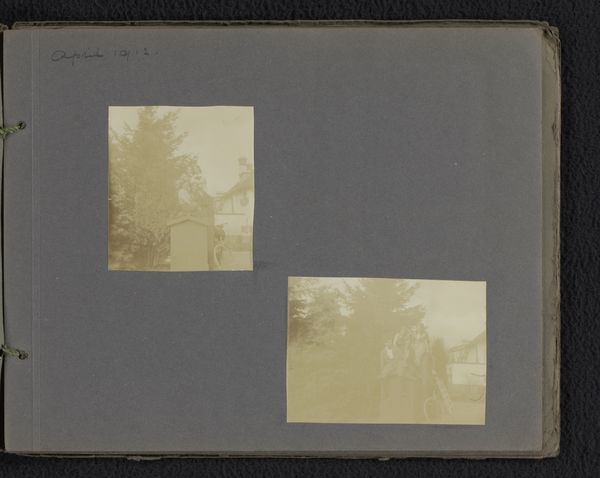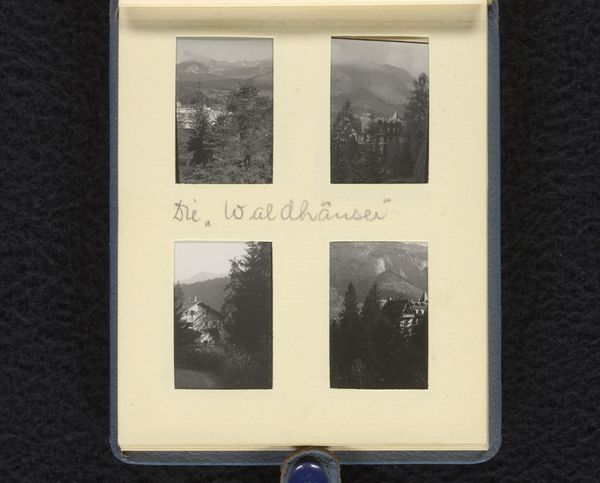
Stuttgart vanuit de woning van de familie Wachenheimer aan de Hauptmannsreute, 1936-1937, Stuttgart 1936 - 1937
0:00
0:00
Dimensions: height 33 mm, width 44 mm, height 85 mm, width 105 mm
Copyright: Rijks Museum: Open Domain
Curator: This photograph offers a fascinating perspective—or rather, perspectives. What you’re looking at is a page from a family photo album titled "Stuttgart vanuit de woning van de familie Wachenheimer aan de Hauptmannsreute, 1936-1937, Stuttgart," composed of four individual gelatin silver prints. Editor: It's almost like looking through different windows, little glimpses offered and withheld at the same time. I’m immediately struck by the contrast – the meticulous, almost claustrophobic arrangement, juxtaposed with the expansive, if somewhat blurry, views of the city. It feels… contained. Curator: Precisely. These images, captured through the Wachenheimer family's window, offer an intimate view of Stuttgart during a period of immense change and growing societal pressure. As a historical document, it subtly hints at both observation and enforced confinement. We know this Jewish family was facing increasing persecution. Editor: Knowing that, the “window” motif is even more powerful. It speaks volumes about looking out, but being unable to participate freely. Each little scene almost feels like a memory trying to escape a tightening frame. And the black and white… it washes everything in a sort of preemptive nostalgia, doesn’t it? A coded past that foreshadows…everything. Curator: Indeed. The composition, framing, and medium speak to a period grappling with societal shifts, capturing a visual record framed by personal experience. Photography became a crucial tool for families like the Wachenheimers during this time, documenting their existence and perspectives as their world drastically changed. It's about preserving identity. Editor: Makes you wonder what those streets sounded like then… What fears, what whispers did those walls absorb? It transforms the photo from simply a visual experience into something more… haunted. Each tiny photograph becomes a fragment of a suppressed narrative. It whispers secrets. I love the way seemingly neutral imagery can bear such heavy weight. It’s also beautiful; so simple. Curator: Absolutely. The very act of documenting these ordinary streetscapes and building fronts transforms the everyday into the extraordinary. In a way it speaks to the powerful persistence of memory even when actively suppressed. Editor: Well, I for one am immensely grateful this visual poem survived, a reminder of looking – and what looking really means. Curator: A testament to quiet resistance through the simple act of seeing and recording the world.
Comments
No comments
Be the first to comment and join the conversation on the ultimate creative platform.

